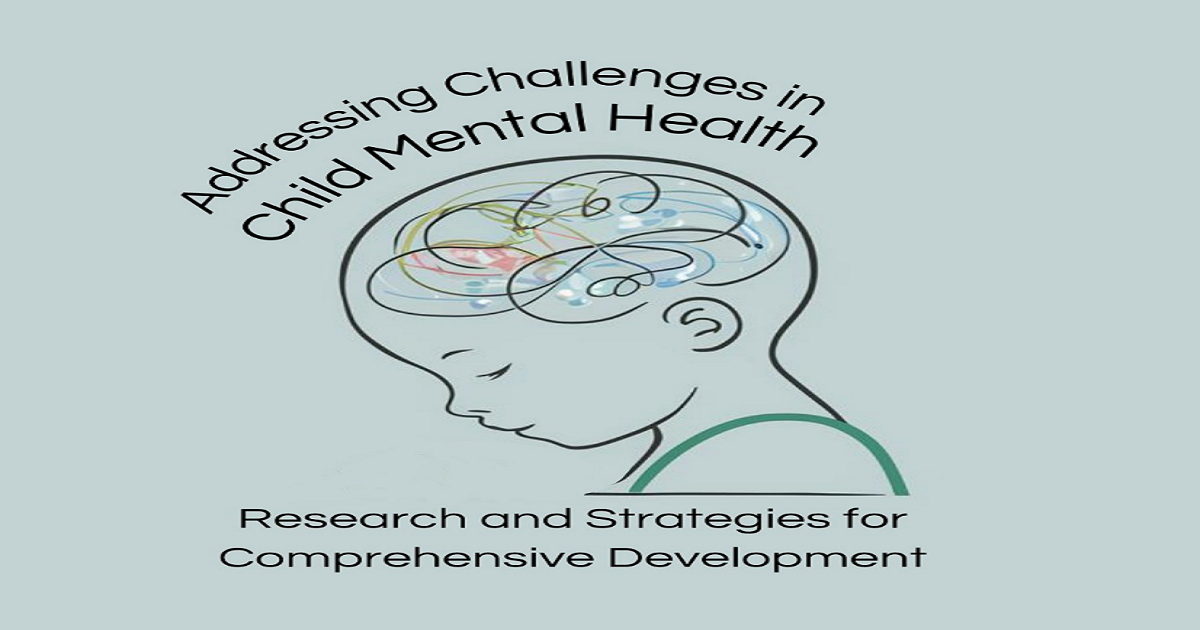Addressing Challenges in Child Mental Health: Research and Strategies for Comprehensive Development
A special issue of Children (ISSN 2227-9067). This special issue belongs to the section "Pediatric Mental Health".
Deadline for manuscript submissions: 1 June 2025 | Viewed by 6668

Special Issue Editors
Interests: emotional regulation; emotional intelligence; frustration tolerance; behavioral problems; behavioral disorders; social skills; relational skills; childrens; adolescents
Special Issues, Collections and Topics in MDPI journals
Special Issue Information
Dear Colleagues,
Introduction
Childhood mental health is a critical issue that has garnered global research attention. Currently, children and young people face significant challenges in their mental health, with profound effects on their well-being and development. Understanding these issues and their impact on children and the youth population is crucial to effectively addressing mental health needs. This monograph addresses the importance and urgency of researching these topics, highlighting how attention to childhood mental health has become an internationally recognized issue. We will explore current challenges and strategies with which to improve the mental health of children and young people in a global context.
Context and Significance
Childhood and adolescence are critical periods for cognitive, emotional, and social development; however, in recent years, we have witnessed an increase in mental health disorders among this population, which represents a growing concern worldwide. Issues such as anxiety, depression, attention deficit hyperactivity disorder (ADHD), and autism spectrum disorder (ASD) are negatively impacting the quality of life of children and young people, as well as their ability to reach their full potential.
Importance of Research
This monograph underscores the importance of research in the field of child mental health. Through rigorous studies and data analyses, we can identify the risk and protective factors that influence the mental health of children and young people. Additionally, research provides crucial information for the development of effective interventions and public health policies aimed at promoting psychological well-being from an early age.
Current Challenges
We face various challenges in the field of child mental health, ranging from a lack of access to adequate services to the social stigma associated with mental disorders. The COVID-19 pandemic has further exacerbated these difficulties, with an increase in levels of stress, anxiety, and depression among children and young people due to social isolation, the disruption of routines, and uncertainty about the future.
Strategies for Improvement
To address these challenges, it is crucial to implement comprehensive strategies involving multiple stakeholders, including health professionals, educators, families, and communities. This may include promoting healthy school environments, training healthcare professionals in the early detection and treatment of mental disorders, as well as public awareness campaigns to reduce stigma and promote acceptance and support for those facing emotional difficulties.
Conclusion
In summary, this monograph highlights the urgency of addressing child mental health as a global priority. By understanding current challenges and developing effective strategies, we can work towards a future where all children and young people have the opportunity to grow and thrive in environments that promote their mental health and overall well-being.
Dr. Ignasi Navarro-Soria
Dr. Tíscar Rodríguez-Jiménez
Guest Editors
Manuscript Submission Information
Manuscripts should be submitted online at www.mdpi.com by registering and logging in to this website. Once you are registered, click here to go to the submission form. Manuscripts can be submitted until the deadline. All submissions that pass pre-check are peer-reviewed. Accepted papers will be published continuously in the journal (as soon as accepted) and will be listed together on the special issue website. Research articles, review articles as well as short communications are invited. For planned papers, a title and short abstract (about 100 words) can be sent to the Editorial Office for announcement on this website.
Submitted manuscripts should not have been published previously, nor be under consideration for publication elsewhere (except conference proceedings papers). All manuscripts are thoroughly refereed through a single-blind peer-review process. A guide for authors and other relevant information for submission of manuscripts is available on the Instructions for Authors page. Children is an international peer-reviewed open access monthly journal published by MDPI.
Please visit the Instructions for Authors page before submitting a manuscript. The Article Processing Charge (APC) for publication in this open access journal is 2400 CHF (Swiss Francs). Submitted papers should be well formatted and use good English. Authors may use MDPI's English editing service prior to publication or during author revisions.
Keywords
- childhood mental health
- cognitive development
- emotional well-being
- mental disorders
- early interventions
- prevention strategies
- social impact
- access to healthcare services
- stigma and discrimination
Benefits of Publishing in a Special Issue
- Ease of navigation: Grouping papers by topic helps scholars navigate broad scope journals more efficiently.
- Greater discoverability: Special Issues support the reach and impact of scientific research. Articles in Special Issues are more discoverable and cited more frequently.
- Expansion of research network: Special Issues facilitate connections among authors, fostering scientific collaborations.
- External promotion: Articles in Special Issues are often promoted through the journal's social media, increasing their visibility.
- e-Book format: Special Issues with more than 10 articles can be published as dedicated e-books, ensuring wide and rapid dissemination.
Further information on MDPI's Special Issue policies can be found here.







